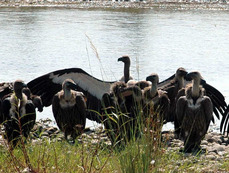
NEW DELHI: The government today gave its approval for signing an MoU for conservation of migratory birds of prey in Africa and Eurasia, which will help India gain knowledge in effectively managing the habitats of these raptors. A meeting of the Union Cabinet chaired by Prime Minister Narendra Modi gave its nod for signing the MoU which is also called the 'Raptor MOU' that extends its coverage to 76 species of birds...

of prey out of which 46 species, including vultures, falcons, eagles, owls, hawks, kites and harriers also are found in India. India will become the 54th signatory to the MOU. "The Union Cabinet chaired by the Prime Minister Narendra Modi has given its approval to sign MOU on the Conservation of Migratory Birds of Prey in Africa and Eurasia, also called the 'Raptor MOU' with the Convention on Conservation of Migratory Species (CMS)," an official statement said.
Given that the Raptor MOU is also in conformity with the provisions of the existing Wild Life (Protection) Act, 1972, wherein the birds have been accorded protection, India would gain domain knowledge which would be helpful in effectively managing the habitats of these raptors. It would also include concerted trans-boundary efforts for conservation through interaction with other range countries by signing of the MOU with the CMS. Pakistan and Nepal are the other neighbours which are signatories to this MOU.
Raptor MOU was concluded on October 22, 2008 and came into effect on November,1 2008. The Raptor MOU is an agreement under Article IV paragraph 4 of the CMS and is not legally binding.vThe MOU seeks willingness of the signatory range states for working for conservation of the raptor species and their habitats. An action plan has been formulated which primarily envisages the conservation action for raptor species, the statement said.vThe CMS or Bonn Convention, under the United Nations Environment Programme (UNEP) aims to conserve migratory species throughout their range. India had become a party to the CMS since November 1, 1983.vAccording to reports, around nine species of vulture can be found in India but presently most are in danger of extinction. Harriers are slender, long, bare-legged, long-winged and long-tailed hawks and India is the largest wintering ground for harriers in the world but their numbers too are dwindling.
Given that the Raptor MOU is also in conformity with the provisions of the existing Wild Life (Protection) Act, 1972, wherein the birds have been accorded protection, India would gain domain knowledge which would be helpful in effectively managing the habitats of these raptors. It would also include concerted trans-boundary efforts for conservation through interaction with other range countries by signing of the MOU with the CMS. Pakistan and Nepal are the other neighbours which are signatories to this MOU.
Raptor MOU was concluded on October 22, 2008 and came into effect on November,1 2008. The Raptor MOU is an agreement under Article IV paragraph 4 of the CMS and is not legally binding.vThe MOU seeks willingness of the signatory range states for working for conservation of the raptor species and their habitats. An action plan has been formulated which primarily envisages the conservation action for raptor species, the statement said.vThe CMS or Bonn Convention, under the United Nations Environment Programme (UNEP) aims to conserve migratory species throughout their range. India had become a party to the CMS since November 1, 1983.vAccording to reports, around nine species of vulture can be found in India but presently most are in danger of extinction. Harriers are slender, long, bare-legged, long-winged and long-tailed hawks and India is the largest wintering ground for harriers in the world but their numbers too are dwindling.

 RSS Feed
RSS Feed
